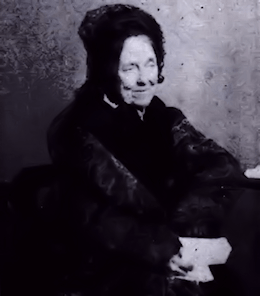Textus Receptus Bibles
Julia E. Smith Translation 1876
| 15:1 | And I saw another sign in heaven, great and wonderful, seven angels having the seven last blows; for in them was the wrath of God finished. |
| 15:2 | And I saw as a sea made of glass mingled with fire: and they conquering from the wild beast, and from his image, and from his stamp, and from the number of his name, standing upon the sea made of glass, having harps of God. |
| 15:3 | And they sing the song of Moses the servant of God, and the song of the Lamb, saying, Great and wonderful thy works, O Lord God, Omnipotent Ruler; just and true thy ways, King of the holy. |
| 15:4 | Who shall not fear thee, O Lord, and glorify thy name? for thou alone holy: for all nations shall come and worship before thee; for thy justices were made manifest. |
| 15:5 | And after these things I saw, and behold, the temple of the tent of testimony was opened in heaven: |
| 15:6 | And the seven angels came forth out of the temple, having the seven blows, clothed in linen, pure and shining, and being girded about the breasts with golden girdles. |
| 15:7 | And one of the four living creatures gave the seven angels seven golden bowls full of the wrath of God, living forever and ever. |
| 15:8 | And the temple was filled with smoke from the glory of God, and from his power; and none could come into the temple, till the seven blows of the seven angels were finished. |

Julia E. Smith Translation 1876
The Julia Evelina Smith Parker Translation is considered the first complete translation of the Bible into English by a woman. The Bible was titled The Holy Bible: Containing the Old and New Testaments; Translated Literally from the Original Tongues, and was published in 1876.
Julia Smith, of Glastonbury, Connecticut had a working knowledge of Latin, Greek and Hebrew. Her father had been a Congregationalist minister before he became a lawyer. Having read the Bible in its original languages, she set about creating her own translation, which she completed in 1855, after a number of drafts. The work is a strictly literal rendering, always translating a Greek or Hebrew word with the same word wherever possible. Smith accomplished this work on her own in the span of eight years (1847 to 1855). She had sought out no help in the venture, even writing, "I do not see that anybody can know more about it than I do." Smith's insistence on complete literalness, plus an effort to translate each original word with the same English word, combined with an odd notion of Hebrew tenses (often translating the Hebrew imperfect tense with the English future) results in a translation that is mechanical and often nonsensical. However, such a translation if overly literal might be valuable to consult in checking the meaning of some individual verse. One notable feature of this translation was the prominent use of the Divine Name, Jehovah, throughout the Old Testament of this Bible version.
In 1876, at 84 years of age some 21 years after completing her work, she finally sought publication. The publication costs ($4,000) were personally funded by Julia and her sister Abby Smith. The 1,000 copies printed were offered for $2.50 each, but her household auction in 1884 sold about 50 remaining copies.
The translation fell into obscurity as it was for the most part too literal and lacked any flow. For example, Jer. 22:23 was given as follows: "Thou dwelling in Lebanon, building as nest in the cedars, how being compassionated in pangs coming to thee the pain as in her bringing forth." However, the translation was the only Contemporary English translation out of the original languages available to English readers until the publication of The British Revised Version in 1881-1894.(The New testament was published in 1881, the Old in 1884, and the Apocrypha in 1894.) This makes it an invaluable Bible for its period.